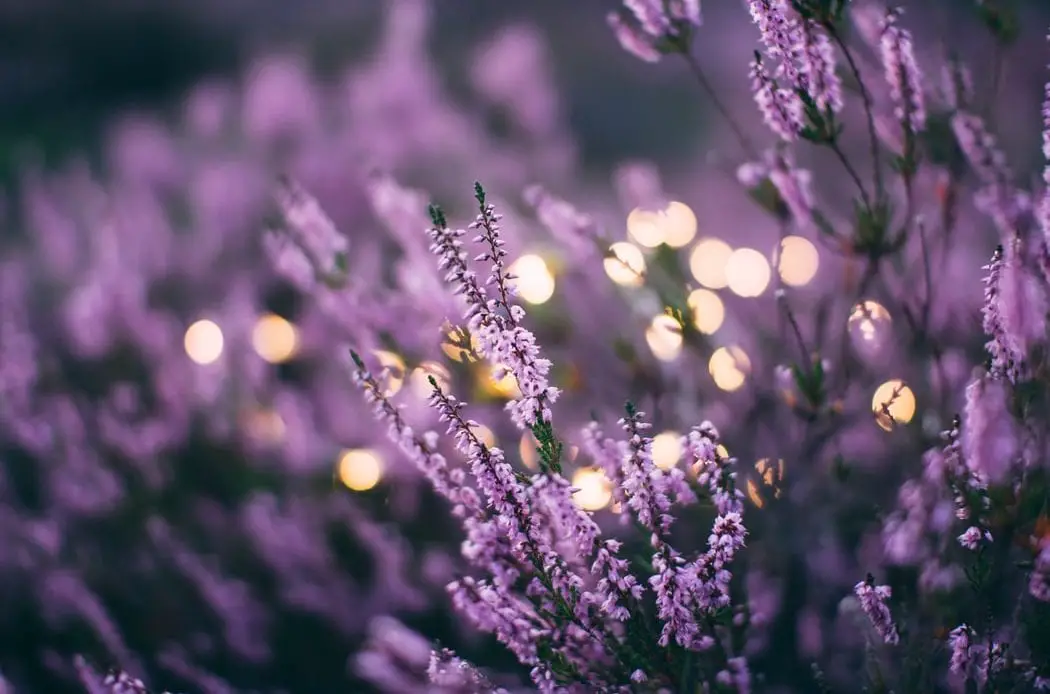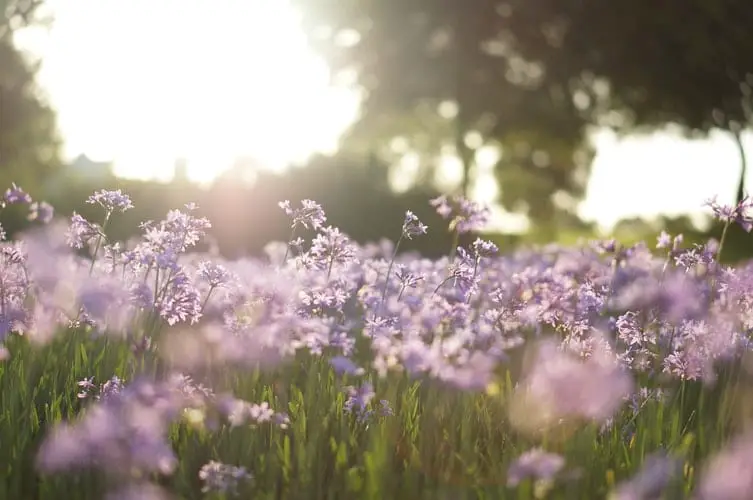
The word lavender is derived from the Latin word “lavare” meaning “to wash”. Lavender has an enchanting fragrance that relaxes your senses. Lavender is an ideal plant for your home or garden since it has a long life.
Lavender flowers have wonderful colors. Lavenders can be used for medicinal and culinary purposes. They are used as cut flowers, in bouquets and as dried flowers. Lavenders are also cultivated for commercial purposes for extracting essential oils.
Lavender has more than 2,500 years old history. They are believed to be natives of Mediterranean, Middle East and India. Lavender belongs to the mint family. This family comprises more than 200 genera and 6,000 species. But do you know there are many types of lavender? Read on as we throw light on the various types of lavender.
Types of Lavender
Lavender can be divided into 45 species, which is again divided into 450 varieties. English Lavender, French Lavender, Spanish Lavender and Portuguese Lavender are the popular species of lavender commonly cultivated in gardens. There is a hybrid variety called Lavandula x Intermedia or Lavandin, which is also popular among gardeners.
1) Kew Red, Spanish Lavender.
This type of lavender is also known as the French Lavender, Bract Lavender or Butterfly Lavender. This plant has rotund, dark, deep-cherry pink shaded flower heads. The flower head has light pink bracts on their crown. These bracts fade to white as they grow. Its silver-coloured leaves have an intense aroma. With its aromatic leaves and bright flowers, this plant can be a prized addition to your garden.
The other good thing about this plant is its long blooming period, which starts in mid-late spring and stretches to late summer. Flowers start appearing as early as May. Another flowering period happens in June. You can enjoy yet another set of blooms in late summer or fall. In mild climates, the plant produces flowers throughout the year.
This drought-resistant plant thrives in bright sunlight. It can grow well in warm winter climates. The plant grows to a height of 24inches in thick heap.
2) Betty’s Blue, English Lavender (Lavandula Angustifolia)
English Lavender is often mistaken for a herb due to its aromatic leaves and flowers. This plant reaches a height of 2 to 3 feet (0.91 m). Huge purple flowers and gray green leaves are sure to give your garden an attractive look. The flowering period is from late spring to early summer. The dried flowers and leaves of this plant are used in sachets and potpourris.
This plant requires ample sunlight and dry to medium type of soil. Young plants require plenty of water. Once they are established, the plants are drought-resistant. The plants have been used as a flavoring ingredient. They also have medicinal uses related to aromatherapy. This plant attracts butterflies but repels deer and cats.
English Lavender is divided into some other varieties.
- Lavandula angustifolia ‘Hidcote’: This is a lower variety of English lavender. The plant grows to a height of about 20 inches (ca. 51 cm). The specialty of Hidcote flowers is that they maintain their color even after drying. They are extremely popular in crafts and decorations.
- L. angustifolia ‘Hidcote Giant’: A bigger variety of English lavender. The plant grows to a height of 36 to 40 inches (ca. 1 m).
- L.angustifolia ‘Munstead’: This short variety has flowers in myriad colors like blue, lavender, pink and purple. The plant grows up to 12 inches (ca. 30 cm).
- L.angustifolia ‘Sarah’: This a plant with a height of 6 to 24 inches (0.61 m). The plant has violet flowers.
3) Anouk, Spanish Lavender
This type of lavender has dark purple flowers with purple petal-shaped bracts. This plant can tolerate summer heat and drought very well. Anouk lavender can withstand harsh summers as compared to the other varieties. The plant grows up to 24 to 30 inches (0.76 m) in height. The plant grows straight and has a proud shape at the top. Anouk lavender is suitable for plantation in urban areas since it has a high tolerance for urban pollution. Anouk flowers bloom earlier than other varieties of French Lavender. The flowers start making in appearance in early spring.
4) Lavenite Petite, English Lavender
This type of lavender is a native of New Zealand. The thick plant produces dark violet flowers with a strong aroma. The flowers resemble pom-poms. This plant has short stems, which are 6-8 inches (ca. 20 cm) long. They are a popular choice for planting in containers. The plant has heavy gray-green foliage. The flowers bloom once in mid to late spring. The second flush of flowers are smaller. This drought resistant plant prefers good sunlight and warm winter climate.
5) Impress purple, Hybrid (Lavandula x Intermedia)
Lavandula x Intermedia is a popular choice for bouquets. The intense purple-colored flowers sprout on lengthy stems which are highly suitable for cutting. This plant grows in an awesome pile of green leaves. The plant can reach a height of 24-30 inches (0.76 m). Lavandula x Intermedia is a hybrid variety of lavender. This plant merges the cold-hardiness of English Lavender and the heat tolerating qualities of Portuguese lavender. This type of lavender can tolerate acidic soil conditions.
6) Grosso, Hybrid (Lavandula x Intermedia)
Grosso lavender is the hybrid offspring of English lavender and Portuguese lavender. This type of lavender grows to a huge mound of 24 to 36 inches (0.91 m) in height and width. The plants produce a large number of blooms in mid-summer. The dark purple blooms are filled with essential oils, making it a favorite with commercial growers. This type of lavender produces flowers with large heads having purple bracts. Grosso lavenders are also popular ingredients in sachets and potpourris. Grosso flowers are also used for culinary purposes. They make good seasonings for desserts, teas and spreads. This plant can tolerate winters and summer humidity very well.

7) Portuguese Lavender (Lavandula Latifola)
Portuguese lavender is also called Spike Lavender. This plant is a native of the western Mediterranean region. The bloom is light lilac. This extremely aromatic shrub grows up to 1-3 feet (0.91 m) in height. The flowering period begins in late spring and continues till late summer. Unlike other types of lavender, the leaves of this plant are wide and rough. This plant prefers mild alkaline soil.
8) Egyptian Lavender (Lavandula Multifida)
This type of lavender is also called the fern-leaf lavender. It is known to have a longer lifespan than other varieties of lavender. This plant does not need any maintenance. The bipinnate silver-green leaves have a woolly texture. The blooming period of this lavender begins in May and ends in November. This plant has a peppery aroma.
9) Miss Katherine English Lavender
Unlike other lavenders that have purple or blue flowers, this type of lavender has aromatic light pink blooms. This plant has narrow gray green leaves. This bushy plant requires optimum sunlight and takes 2-5 years to reach its full height of 0.5-1 meters. This plant grows well in neutral to alkaline soil.
10) Lavandula angustifolia ‘Rosea’ (Lavender)
This type of lavender is also called Jean Davis. This is a compact plant with highly aromatic straight light pink flowers. The combination of silver gray leaves and pink flowers give an attractive look to this plant. The plant grows to a heap of 23-30 inches (0.76 m). This plant needs good drainage and air circulation for its growth,
11) Lavandula angustifolia ‘Little Lottie’ (Lavender)
This pretty dwarf lavender is also called Clarmo. The plant produces clumps of pale rose-colored blooms. This type of lavender blooms once in late spring or early summer. It has tiny gray green narrow leaves.
12) Munstead English Lavender
This type of lavender is popular for its culinary use. The soothing lavender-blue flowers are filled with essential oils. This type of English lavender is hardier than other varieties of English lavender. They are easy to maintain and produce plenty of flowers in spring.
13) Lavandula dentata
This is also known as Fringed Lavander. This plant derives its name from its pointed leaves. These plants have colorful flowers and captivating foliage. The leaves of this plant are not as aromatic as some other varieties. But the leaves have a pleasant aroma of lavender and rosemary. This is a continuous flowering variety. The bloom period begins from early summer to fall. If they have access to proper light and warmth, these plants produce flowers throughout the year.
14) Ballerina, Spanish Lavender. (Lavandula Stoechas)
Thistype of lavender can be identified due to its unmistakable flowers that have a purple head and white ears. The ears change color to pink and finally turn purple with age. This plant tolerates mild winters very well. Lavenders grow well in most climates. They do not require much care and fertilizers. Lavender blossoms every year. In the winter only the stems remain. But lavender can also die when improperly pruned. Lavender grows slowly. Generally, lavenders cannot tolerate snow and too much water. Some sunlight, little water and well-drained soil are all that is necessary for this fragrant plant to grow in your garden. Hope you’ve gained a good insight into the different types of lavender.
